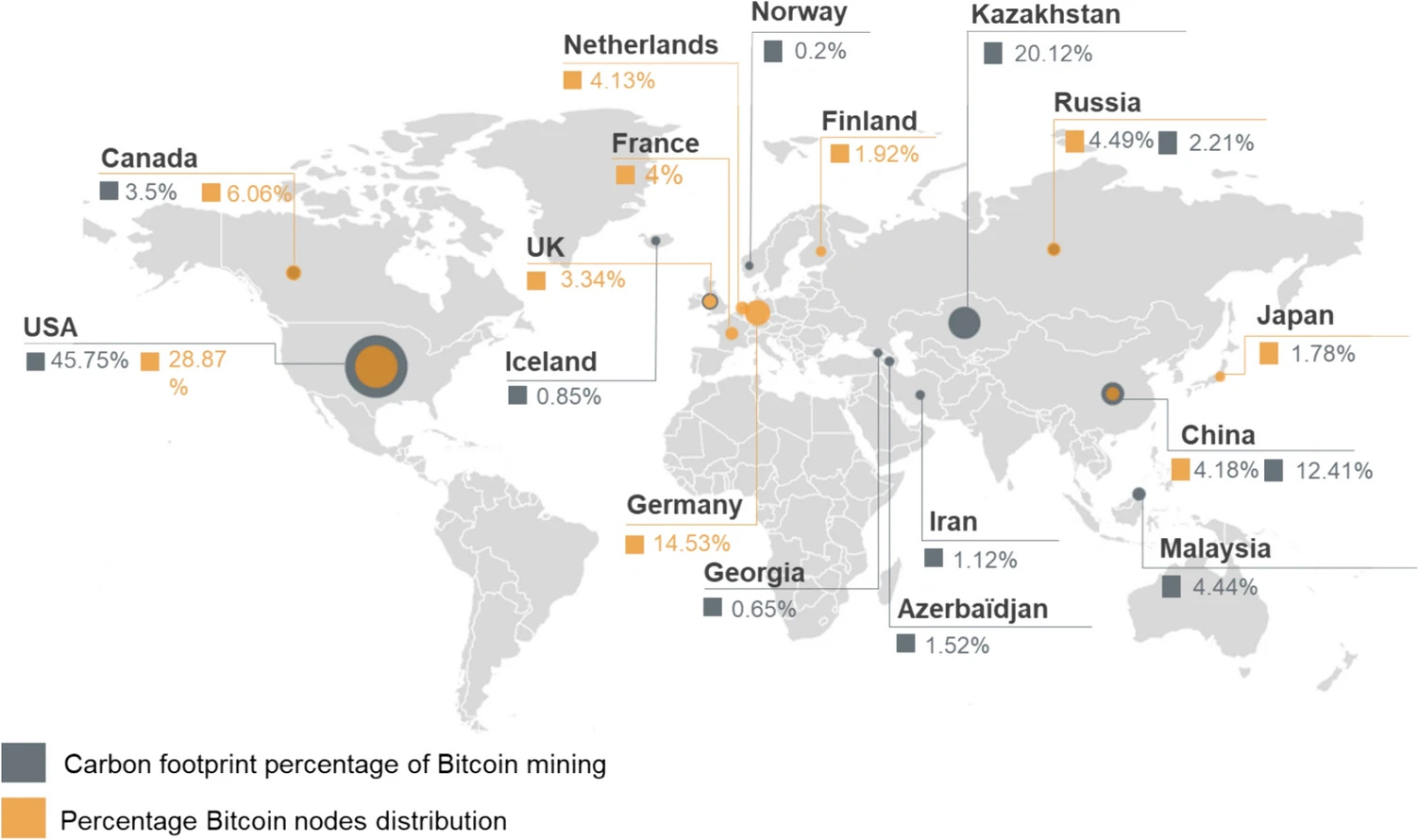Bitcoin’s Global Climate Challenge: New Study Reveals Alarming Carbon Footprint of Cryptocurrency Transactions
Published in Sustainability
Background
A new study has uncovered just how much climate impact a single Bitcoin transaction can cause. The research shows that completing one Bitcoin transaction creates the same amount of greenhouse gas emissions as a mid-sized car traveling 1,600 to 2,600 kilometers. This study investigates the climate impact of Bitcoin mining and offers a new way to track emissions, considering both local mining operations and the global supply chains behind them.
Bitcoin is often seen as a digital, borderless currency, but its environmental impact is tied to physical mining equipment and energy use around the world. This research takes a holistic life cycle approach, looking at emissions not only from Bitcoin’s energy consumption but also from the production of the hardware used to mine it.
How Bitcoin Mining Adds to Global Carbon Emissions
The study employs a global, multiregional economic input-output analysis for measuring Bitcoin mining’s carbon emissions. This means the researchers track emissions both inside the countries where mining happens and from the entire supply chain—like where the electricity is produced and mining machines are made. They found that around 50% of Bitcoin’s total emissions come from the United States, where mining has grown after China banned many mining operations.
Even though China has cracked down on mining, the research reveals that the country still plays a major role in Bitcoin’s carbon footprint. China remains a key player because it produces and exports much of the mining hardware used worldwide. The global nature of Bitcoin means that mining activities and supply chains in different countries are closely connected.

Photo: Geographic distribution of Bitcoin holders/users and carbon footprint of Bitcoin mining, including its supply chain (*the size of the bubbles in the figure shows the magnitude) Retrieved from Onat, N.C., Jabbar, R., Kucukvar, M. et al. Carbon footprint of global Bitcoin mining: emissions beyond borders. Sustain Sci (2024). https://doi.org/10.1007/s11625-024-01576-5
Local Solutions Aren’t Enough
The research highlights that focusing only on reducing emissions within a single country or region won’t solve the bigger issue. For example, switching to renewable energy in certain places may lower emissions there, but the environmental costs tied to manufacturing mining equipment and high reliance on fossil fuels in electricity generation in other countries remain a problem.
The findings suggest that local policies alone won’t be effective because Bitcoin’s supply chain is global. To truly reduce Bitcoin’s environmental impact, countries and companies must work together across borders. If emissions are reduced in one region but increase in another, the overall environmental benefits will be lost.
One example from the study is Norway, where Bitcoin mining causes very low emissions due to the use of renewable energy like hydropower. However, while Norway’s domestic emissions from Bitcoin mining are low due to its use of clean energy sources, a significant share of its emissions stems from its global supply chain, particularly from China.
What Can Be Done?
The study calls for stronger international cooperation and better carbon tracking systems to address Bitcoin’s emissions. Policymakers should focus on reducing emissions along the entire Bitcoin supply chain, from the production of mining hardware to the energy used in mining operations.
The researchers also encourage improved Scopes 1, 2, and 3 carbon footprint reporting in the cryptocurrency industry, helping companies and governments understand the full environmental impact of Bitcoin mining. By tracking emissions across the indirect supply chains, it will be easier to create effective policies to reduce Bitcoin’s carbon footprint.
This research contributes to the broader conversation on how to make cryptocurrencies more environmentally friendly. Bitcoin and other digital currencies must find ways to lower their emissions, especially as they become more popular. The study’s message is clear: tackling Bitcoin’s carbon problem requires a global effort, and every part of the supply chain must be part of the solution. This can include funding renewable energy projects and energy efficiency initiatives in mining countries.
For instance, improving the energy efficiency of data centers can significantly reduce energy consumption. Transitioning to renewable energy sources for powering data centers can help reduce reliance on fossil fuels and lower substantially the Scope 2 carbon footprints of mining operations. This can involve purchasing renewable energy credits, installing on-site renewable energy systems, or entering into power purchase agreements with renewable energy providers.
The way forward
Bitcoin’s environmental impact is more serious than many realize. One transaction alone can have the same carbon footprint as driving a car across a country. The findings of this research make it clear that local efforts to reduce emissions won’t be enough. Bitcoin’s supply chain is spread across many countries, and emissions from mining equipment and operations need to be addressed on a global scale.
The study serves as a wake-up call for the cryptocurrency industry. If Bitcoin wants to move toward a sustainable future, it needs global policies and cooperation to reduce emissions across borders. With better carbon management strategies and more transparent reporting, Bitcoin can become a cleaner and more responsible part of the financial system. There are eco-friendly cryptocurrency projects: for example, Solar Coin that incentivizes real-world environmental activities, such as verifiably produced solar energy; and BitGreen that aims to incentivize carpooling, purchasing sustainable coffee, and volunteering. Although more efficient algorithms currently exist and are in use in various cryptocurrency projects, their environmental impacts at a larger scale, when there is much more widespread adoption, have not been investigated. Therefore, potential carbon emissions of alternative consensus mechanisms in blockchain should be further investigated for widespread adoption cases.
Furthermore, ways to implement carbon tax should be investigated as a potential way to minimize the rising Bitcoin mining emissions. While the decentralized unregulated nature of cryptocurrencies is challenging to regulate, there can be solutions within the crypto space where blockchain technology can be used to minimize carbon emissions from mining.
Follow the Topic
-
Sustainability Science

This journal offers insights into interactions within and between nature and the rest of human society, and the complex mechanisms that sustain both.
What are SDG Topics?
An introduction to Sustainable Development Goals (SDGs) Topics and their role in highlighting sustainable development research.
Continue reading announcement





Please sign in or register for FREE
If you are a registered user on Research Communities by Springer Nature, please sign in